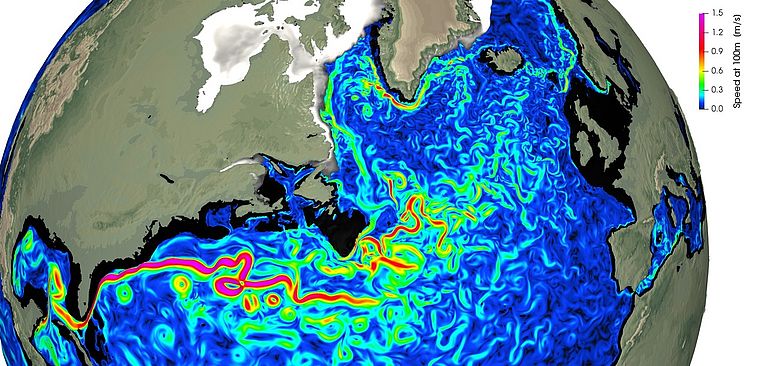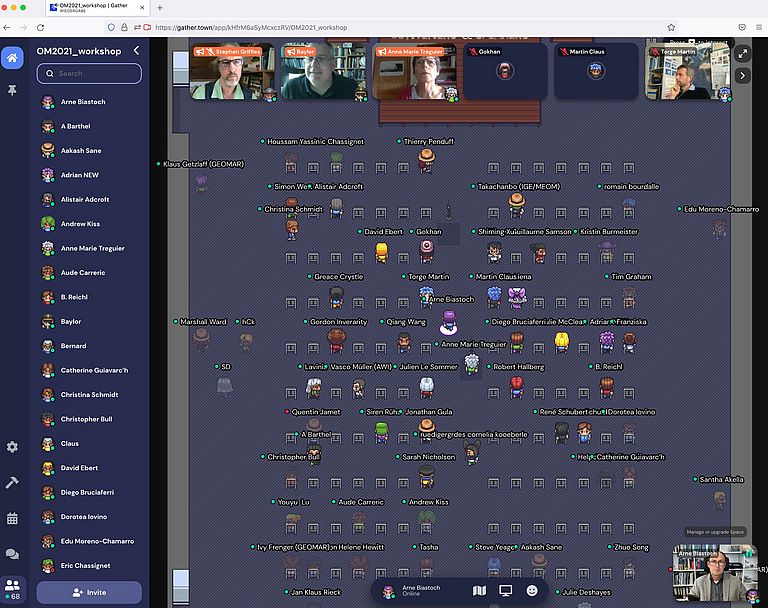Future Directions in Basin and Global High-resolution Ocean Modelling
Virtual workshop brought together more than 150 experts from around the world
To address future directions of ocean modelling, more than 150 experts from Europe, the United States of America, Canada, South Africa, Japan and China met for a virtual workshop organised by GEOMAR Helmholtz Centre for Ocean Research Kiel in cooperation with the Ocean Model Development Panel (OMDP) of the core project Climate and Ocean: Variability, Predictability, and Change (CLIVAR) of the World Climate Research Programme (WCRP). The scientists discussed the current state of eddying ocean models – models that resolve dynamical features, so-called “eddies”, at scales between one and 20 kilometres in the global ocean. They also exchanged views on progress in and future applications of better understanding the role of the ocean in climate and climate variability.
As part of the workshop, participants celebrated the achievements of Prof. Dr. Claus Böning, who retired from his role as Professor of Oceanography at Kiel University and GEOMAR in 2020. Prof. Böning was honoured as a leading scientist, pioneer in numerical ocean modelling and co-founder of the OMDP – a well-respected teacher and inspiring mentor.
The workshop was a first stress test for the GEOMAR conference system, from submission and review of presentation abstracts, registration, programme to the distribution of material. The scientists got together in a virtual conference centre. “After one and a half year under the corona pandemic, we have learned to make the most out of virtual meetings and appreciated the opportunity to meet with experts from around the world”, said Prof. Dr. Arne Biastoch, Physical Oceanographer at GEOMAR. “Having a virtual foyer and additional rooms for individual conversations was a very useful addition – plus, the low-resolution design that also works with low bandwidths turned out to be a nice contrast to the high-resolution models discussed at the conference.” While it is more difficult for young scientists to connect to senior international colleagues in such an online space, the format could still replace some – although not all – meetings and help to reduce the carbon footprint of scientific meetings.
Contact: Prof. Dr. Arne Biastoch




